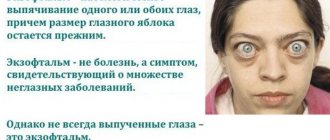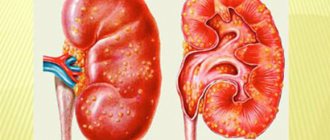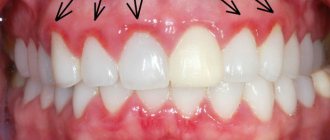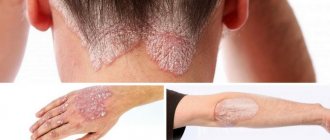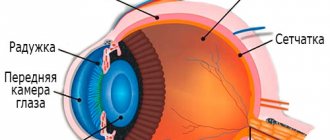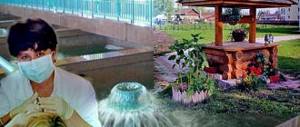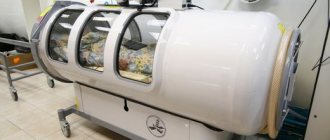What causes heavy legs
Quite often, people do not pay much attention to the discomfort in the form of heaviness felt in the lower extremities. However, the causes of discomfort can be any disease and other minor factors. The reasons are divided into two groups:
- The first group does not include severe pathological processes. The causes of pain are:
- static lifestyle . Many people who work too long periods of sedentary work are at risk. The patient can spend more than 9 hours a day in this position, which should not happen;
- overweight. People with excess body weight often suffer from a feeling of heaviness in their legs below the knees. This happens due to the increase and compaction of interstitial fluid that circulates throughout the body. The increased layer of internal fat begins to interfere with the normal contraction of blood vessels;
- drug treatment . If a person takes certain hormonal or diuretic drugs for a long time, then over time the heaviness in the legs will make itself felt. In many cases, there is an improvement in the condition after stopping medication;
- the onset of changes in hormonal levels in women, pregnancy, puberty and menopause affects the occurrence of both temporary and ongoing heaviness of the legs below the knee;
- weather . It has long been known that legs hurt and heaviness is felt when weather conditions change. For example, when there is intense heat, all motor activity of a person is greatly reduced, while the volume of fluid circulation in the body changes, the vessels begin to dilate, and the tone, on the contrary, decreases. This condition can lead to stagnation, which can subsequently lead to the formation of blood clots (i.e., thrombosis of the veins of the lower extremities).
- The second group includes more serious diseases, after which complications may develop. Heaviness in the legs can be one of many symptoms of pathologies dangerous to humans.
Spinal pathologies.
The most common is lumbosacral osteochondrosis, a disease that leads to degeneration of the intervertebral discs. At the first stage, it manifests itself with light but noticeable contractions in the calf muscles, shooting pains in the lower back and severe heaviness of the legs.
With the onset of the acute phase, the sensitivity of the limbs, vegetative-trophic disorders, and loss of tendon reflexes may be impaired.
Joint pathologies.
Often pain can occur due to diseases of the musculoskeletal system (arthritis, arthrosis, etc.).
Arthrosis is a degenerative-dystrophic disease. It often manifests itself in the form of severe pain, a feeling of stiffness, and rapid fatigue of the legs. Sometimes with this disease there may be no pain at all, but the person will constantly feel a feeling of heaviness in the legs and aches.
Often heaviness of the legs is a symptom of arthritis - an inflammatory disease, the development of which is provoked by an infectious process, an autoallergic reaction, etc.
Flat feet.
Flat feet are characterized by a low arch of the foot. At the first stage, the patient feels rapid fatigue, heaviness, and pain with light pressure on the feet.
Symptoms gradually intensify - pain appears much more often and becomes more intense, swelling of the legs is observed. If left untreated, the feet become severely deformed.
Diseases of the cardiovascular system.
Swelling and heaviness of the limbs can be symptoms of chronic heart diseases: congenital heart disease, coronary heart disease, myocardial dystrophy, etc. Swelling of the legs and ankles becomes symmetrical with heart failure.
Kidney diseases.
Some diseases of the renal system also contribute to the appearance of leg pain at night and severity.
Diabetic nephropathy is a disease in which the metabolism of lipids and carbohydrates in the kidney tissues is disrupted. As a result, the capillaries are affected. Excessive fatigue, pain in the limbs and swelling appear.
Kidney failure is characterized by the inability of the kidneys to properly filter the blood to eliminate unnecessary waste products. Trauma can contribute to the onset of the disease.
Glomerulonephritis is a disease that affects the kidney glomeruli (glomeruli) and can be acute or chronic. May manifest as pain in the legs.
Vascular diseases of the legs.
If your left leg hurts from the knee to the foot, then this is a sign of the presence of some kind of vascular disease. The most famous and common is varicose veins in the legs and chronic venous insufficiency. It is precisely because the muscular walls of the superficial veins are too weak and the valve apparatus is defective that such diseases occur.
In the first stages, heaviness of the legs develops, which usually manifests itself in the afternoon, after which the pain in the legs intensifies significantly at night. When the process of disease progression begins, the severity and pain increases. In addition, cramps and swelling appear. In the absence of proper treatment, severe complications may develop.
If the patient feels discomfort, heaviness in the legs, pain, then he should undergo a full examination and begin treatment.
Providing assistance at home
Problems with fluid retention in the body can manifest themselves not only due to diseases of the internal organs. Part of the population notes a similar problem when there was a long flight or there was an excess of salty food on the table. In such a situation, you can help a person without using tablets and syrups. Simple tips that will tell you how to relieve swelling of the legs at home:
Strengthening the walls of blood vessels is possible with regular use of a contrast shower. Foot baths also have a good effect; you can add a little sea salt or apple cider vinegar to the water. Such measures will speed up the removal of toxins from the skin. When the fluid does not drain properly, you need to speed up the action of the excretory system. To do this, patients are asked to drink more fluid, but this only applies to clean water. Carbonated drinks, juices, and sweet cocktails cannot help in this case. There is a beneficial effect of green tea without sugar on the elimination of puffiness. A foot massage will help disperse stagnant lymph. The sore limb is kneaded with your fingers, but the places where the lymph nodes are located are not touched - the area under the knee on the back side and the groin. Self-massage is a type of assistance that can be provided without the involvement of others. The position of the body with the legs raised up is considered winning. If you put a pillow under your ankles, the blood will flow faster. The swelling will go away almost completely without the use of other techniques. In some situations, a cool compress is good to relieve heaviness in the legs and remove swelling.
It is important that there is cool water in the heating pad; ice leads to hypothermia. Cold is not used directly; the heating pad is usually wrapped in a towel.
Such simple methods and diuretics prescribed by a doctor help cope with swelling in the legs.
Latest information: A person has a blood clot, what is it?
Categories
- Edema in pregnant women
- Edema in children
- Swelling in the head area
- Persons
- Eye
- Rta
- Throat
- Necks
- Hand
- Legs
- Torso
- General swelling
Which doctor should I contact?
Contacting a medical facility is mandatory if the patient feels unbearable pain in the legs from the knee to the foot. In case of increased pain, obvious swelling, severe redness and elevated temperature in the affected limb, you should definitely call an ambulance.
Initially, you should go to see a therapist . The therapist will tell you which doctor to contact after the initial examination. For example, with varicose veins, a visit to a phlebologist or vascular surgeon . After the examinations, treatment is prescribed. In case of flat feet, they are referred to an orthopedic traumatologist , who, after studying the cause and general condition, will be able to develop and prescribe the necessary exercises and prevention of flat feet.
If you are diagnosed with sacral osteochondrosis, you need to contact a vertebrologist or neurologist . With this disease, the patient's leg hurts greatly, so the pain quickly intensifies. Also, when the legs hurt below the knee and the pain radiates to the buttocks, this is a clear sign of inflammation of the sciatic nerve. If your right leg hurts, then there is a risk of progression of chronic venous insufficiency.
Effective diuretics
But it also has disadvantages that are associated with the rapid achievement of a therapeutic effect.
But there is no need to worry, since in addition to this remedy there are others that can help in this situation. Doctors can use a number of other diuretics that will help relieve swelling of the legs:
- Thorsid;
- Trifas;
- Toradiv;
- Trisemid;
- Sutril Neo.
Swelling of the legs can be successfully treated with any of the listed drugs; it is important that they are prescribed by the attending physician. Before recommendations are issued, specialists conduct laboratory tests
With their help, they get a complete picture of the patient’s condition and consider the possibility of an allergic reaction.
If the patient does not consult a doctor and is treated with these drugs without control, serious complications may develop. Among them are:
- arrhythmia, tachycardia, vascular collapse, fluctuations in circulating blood volumes;
- risk of developing thrombosis, thromboembolism, hepatic encephalopathy;
- anaphylactic shock, urinary retention, interstitial nephritis, toxic epidermal necrolysis.
Diagnostics
After contacting specialists, the patient is prescribed a set of examinations, which are mandatory. The main task of the doctor is to establish the root cause of discomfort. The first thing that is carried out is a laboratory and instrumental examination , which includes the following methods:
- blood tests:
- – a general analysis is done to determine the number of red blood cells and platelets, the level of hemoglobin. Also, using a general analysis, the erythrocyte sedimentation rate (ESR) is determined;
- – biochemical analysis determines the volume of uric acid, urea, electrolytes and creatinine;
- – to detect diabetes mellitus, an analysis is done to determine the level of glucose in the blood;
- – serological analysis makes it possible to identify a specific factor indicating the presence of rheumatoid arthritis.
- A general urine test helps determine the level of red blood cells and protein when diagnosing kidney disease;
- color and duplex scanning of veins (CDS, ultrasound scan). The procedure is recommended to exclude venous pathologies. Involves scanning the saphenous veins;
- Magnetic resonance imaging and contrast computed tomography of blood vessels help detect heart and kidney diseases. Also, this research method gives a clear assessment of the degree of dilation or narrowing of blood vessels, clarifies the size and location of blood clots, if any;
- X-ray examination reveals any changes in the body that characterize various diseases of the musculoskeletal system;
- To fully examine the foot to exclude flat feet, computer plantography is performed;
- ultrasound examination of the heart and electrocardiography. Using these methods, the general condition of the heart and the absence or presence of pathological processes are assessed;
- When performing phonocardiography, the functioning of the valve apparatus and arteries is assessed.
Ways to treat leg pain
The doctor decides what to treat and what kind of therapy it will be. There are quite a few ways to get rid of discomfort in the lower extremities. These include:
The entire period of treatment should be monitored by a doctor to prevent complications. You should not self-medicate and take medications yourself; this is dangerous without a doctor’s prescription.
Incorrectly selected medications can provoke allergic reactions or aggravate the underlying disease that caused leg pain.
Folk remedies for leg pain
Traditional medicine is often used to eliminate pain and heaviness in the legs.
However, before you start resorting to traditional methods, you should still consult a doctor and inform about your intentions.
There are several recipes that can help eliminate pain in the lower extremities.
One of the effective products against pain is flower honey . To relieve pain, you need to melt the product and apply it to the affected area, bandage it and leave for 1.5 hours. It is recommended to do this procedure once a day for 10 days.
You can make a special decoction for compresses . Most effective for arthritis. To do this you will need 1 tablespoon of marsh cudweed and 2 tablespoons of flower honey. Then pour boiling water over the dried water and leave for an hour, cool and strain. Add honey and apply the resulting product to the affected area. The duration of treatment is 20 days. Apply once a day for 1 hour.
The following remedy for the treatment of rheumatoid and gouty forms of arthritis . You need to pour 4 tablespoons of rosehip flowers with hot water, leave to infuse for 40 minutes, then strain and mix with two tablespoons of honey. Apply the resulting mixture to the sore spot for 30 minutes. Apply 2 times a day for 15 days.
Special foot baths with the addition of natural oils . So, one of the most famous is fir oil. It relieves pain well and relaxes.
To do this, pour the required amount of warm water and add a teaspoon of oil. Keep your feet in the water for 30 minutes. It is recommended to take baths in a course: 4-5 baths per day at night, a break of 3 weeks.
A bath with iodine will also help . This should be done 2 times a week before bedtime. Add a teaspoon of iodine and table soda to 3 liters of filtered water. The water doesn't have to be hot, just warm enough. Immerse your feet in the water for 20 minutes. Afterwards, thoroughly wipe and lubricate the painful areas with iodine solution (5%). The next morning, lubricate the same places with Vaseline.
How to cure swelling with varicose veins
Sometimes the reason why a limb swells is the low elasticity of the vascular wall and its high permeability. In such a situation, taking diuretics will not give a long-term effect, and often provokes a worsening of the condition. Doctors suggest the use of complex treatment, which includes medications that strengthen blood vessels. In addition, it would not be superfluous to prescribe medications that will help normalize venous circulation.
The price of a package of medicine is 800-1000 rubles. For this reason, some prefer cheaper analogues. However, they will not see the same obvious effect as from the original.
Angioprotectors and venotonics have proven themselves in the fight against the described problem. Regular use involves increasing the tone of blood vessels. In addition, it was noted that the walls of the veins will be less susceptible to stretching.
It is important that venotonics almost do not entail the occurrence of side effects. It is quite rarely observed when patients complain of neurovegetative disorders or dyspeptic problems
Often, pathologies go away without the intervention of specialists and do not require the appointment of special therapy to eliminate them.
Preventive measures
After completing the entire course of treatment, you should not neglect preventive measures.
In the absence of prevention, the underlying disease that caused leg pain can recur, that is, appear again. To prevent this from happening, you must follow certain rules:
- do not wear high-heeled shoes. The best option would be comfortable shoes made from natural materials with low heels or no heels at all;
- When in a sitting position, do not cross your legs. This position provokes compression of blood vessels;
- monitor your weight. It is best to switch to a balanced diet. Do not eat too fatty foods, give up carbonated drinks, alcohol, etc. It is worth eating more fresh fruits and vegetables, poultry, etc. Dishes should be steamed, thus more beneficial microelements are retained in the food;
- at the first signs of flat feet, treatment should begin;
- rest in a lying position, raising your legs up;
- engage in physical therapy, go to special massages;
- try to walk barefoot around the house more.
Relaxing baths and a light foot massage will also help relieve tension. It is better to do the procedures in the evening before bedtime. If medications have been prescribed by a doctor, they must be taken in a course. You should periodically consult with specialists and undergo repeated diagnostics.
You should not perform any physical exercise on your own. If the approach is incorrect, you can get injured or sprained, which will significantly worsen the condition. It is better to contact a specialist in physical therapy.
The prognosis for recovery from pain in the legs depends on the underlying disease that caused the discomfort. If treatment was started on time, then the prognosis is favorable, but if treatment was not started, then complications may develop that will lead to irreversible consequences. It is necessary to engage in timely treatment and observe prevention.
Heaviness and pain in the legs may indicate not only fatigue and excessive physical stress, but also venous diseases. The reasons can only be determined after undergoing an examination.
The problem cannot be left unattended, otherwise more unpleasant consequences may appear in the form of limited mobility.
Causes
More than half of the population complains of pain and heaviness in the legs. Such symptoms most often appear after walking or standing for a long time. If no measures are taken, then over time, swelling of the limbs and cramps are added to fatigue and pain, and the painful sensations become permanent.
The main causes of heaviness in the legs:
- pregnancy;
- hormonal changes;
- elderly age;
- excessive physical activity or, conversely, a sedentary lifestyle;
- excess weight;
- diabetes;
- heredity;
- diseases of the joints of the lower extremities;
- lymphostasis;
- flat feet;
- spine pathologies;
- heart and kidney diseases.
The most common cause of severity is diseases of the veins of the lower extremities. Heredity plays an important role in the development of varicose veins and other diseases.
Varicose veins
Varicose veins of the lower extremities are the most common cause of leg pain. This disease is characterized by dilation of the saphenous veins.
How to relieve tired legs yourself
For heavy and tired legs, traditional methods and traditional medicine are used. The old “old-fashioned” method will help you quickly eliminate pain and heaviness - you need to raise your legs higher while lying down. This helps the blood flow from the lower extremities and brings quick relief. But it comes for a short time.
The method of contrast showers or baths also helps to improve blood circulation.
If your legs get tired due to flat feet, then a massage is appropriate. To do this, you need to lubricate your feet with herbal cream and knead them with your hands, gradually moving higher to your knees. Cream for tired legs based on horse chestnut or menthol relieves heaviness in the legs; simply spread it on them.
Among the folk methods, the following are the most effective:
- Foot bath with nettle and mint. To prepare the solution, you need to mix a spoonful of herbs, pour boiling water, cool to the required temperature, pour into a basin and use as intended.
- Rubbing with ice. Rub your feet with a piece of ice with the addition of mint extract - heaviness and pain go away quickly.
- Infusion of corn silk. Pour 4 tablespoons of raw material with boiling water in a volume of five glasses, leave for half an hour. Strain and drink a glass every 2 hours 30 minutes before meals.
Diagnostics
To get rid of heavy legs, you need to find out the cause. The survey looks like this:
- Ultrasound. The veins and arteries of the lower extremities are examined. An ultrasound of the pelvic organs is mandatory.
- Angioscanning. Using this method, deep and superficial veins are scanned and thrombophlebitis and thromboembolism can be detected.
- Blood test, including sugar level.
- Analysis of urine.
In some cases, an ultrasound of the kidneys, MRI, electrocardiogram and x-ray of the joints may be required.
Edema in pregnant women - methods of combating it
Few women can boast that while carrying a baby, they did not suffer from heaviness in their legs. Almost everyone experiences swelling in recent weeks, but how to get rid of it? If the expectant mother does not have various pathologies that could provoke the problem, then herbal diuretics are prescribed for her. You cannot take medicine from the general list, as it can harm the unborn child.
The following drugs are very popular and are used for a long time for pregnant women:
No other medications are prescribed when carrying a child; there is a risk of developing pathology in the fetus. In order not to provoke swelling in the legs, doctors advise reducing salt intake, since it inhibits the natural removal of fluid from the body.
Cranberry juice has a good diuretic effect. It needs to be included in the diet, which will help fight the problem. A regular compote is made from the berries and drunk throughout the day.
It is prohibited to resort to traditional medicine. During pregnancy, a woman is responsible not only for her own health, but also for the development of the unborn baby. A number of herbal remedies, even those sold in pharmacies, can cause miscarriage. Therefore, at the first manifestations of swelling in the lower extremities, you should immediately see a doctor to prescribe therapeutic therapy.
General principles of treatment
The causes of heaviness in the legs are varied, so treatment depends on the diagnosis. You cannot do without local remedies that have an analgesic and anti-inflammatory effect, for example, Venolife.
In addition to the main treatment, it is necessary to use drugs to restore venous tone. Ascorutin tablets, Venoruton, Troxevasin, Venolek ointments are suitable.
Creams and ointments are best applied before bedtime.
In addition to drug treatment, it is worth drinking vitamin complexes that contain vitamins A, B, C, E, K, PP.
Prevention
Feet are subject to stress every day, so you should take care of them after a hard day at work. A limb massage will help relieve fatigue and normalize blood circulation. It is advisable to do it before bed with the use of phlebotonic creams, which strengthen the tone of the veins. Massage movements should be performed from bottom to top.
In addition to massage, morning and evening exercises are useful to relax the muscles of the legs. Other preventive measures:
- prevent obesity;
- monitor sugar levels;
- exercise;
- avoid excessive exposure to the sun, do not take hot baths;
- wear comfortable shoes, avoid high-heeled shoes;
- eat right, avoid foods high in cholesterol;
- To prevent flat feet, it is advisable to use orthopedic insoles;
- do not wear tight pants that interfere with normal blood circulation.
If the work involves constantly being on your feet, then it is better to use compression hosiery. During pregnancy, you should not get carried away with long walks.
It is necessary to monitor the health of your feet. Pain and heaviness significantly impair the quality of life, and if these symptoms are caused by serious illnesses, they can lead to limited mobility.
If a person experiences difficulty walking, especially when climbing stairs, pain and a feeling of heaviness in the legs, this is an alarming signal. Perhaps pathologies have begun to develop that cannot be ignored. Fibromyalgia, peripheral arterial disease, as well as other disorders of the nervous and circulatory system must be excluded. More common causes of heavy legs are varicose veins or spider veins. Typical symptoms of such pathologies include increased fatigue in the legs, swelling, itching, restless legs syndrome, burning, cramps and changes in skin color.
For prevention purposes
Prevention is aimed at preventing the appearance of varicose veins and improving blood circulation in the legs in general.
Latest information: Vascular diseases of the legs
To do this you need:
- sports – swimming, gymnastics, running;
- a balanced diet recommended by a doctor and rich in vitamin E;
- refusal of high heels – normal height is 2.5-5 cm;
- avoid overheating in the sun or in a steam room;
- wearing loose underwear, using compression stockings and golf;
- no long periods of standing on your feet.
You also need to limit yourself in lifting weights and doing exercises that involve jumping. Walking barefoot and foot massage have a beneficial effect on the tone of the veins. Before going to bed, you can rinse your feet with a contrast shower or take a foot bath - this will improve blood circulation in the lower extremities.
Fatigue, heaviness, pain and swelling of the legs are not harmless phenomena and arise not only from heavy loads on the limbs. The problem may be more serious and with bad consequences.
It is necessary to monitor your health and avoid advanced situations with unspecified complications.
Many people are familiar with such an uncomfortable feeling as heaviness in the legs. This phenomenon usually occurs due to congestion of the blood vessels in the legs. There can be a huge number of explanations for this condition. It happens that it is a consequence of fatigue, and sometimes it indicates quite serious hidden diseases.
Why do you constantly experience heaviness in your legs, where does the discomfort come from?
The legs are the furthest part of the body from the heart, which means that blood delivery back and forth requires considerable effort. In addition, the physical stress on the limbs is great, because they have to “carry” many kilograms throughout the day.
Physical activity requires a good supply of blood to the muscles, and accordingly the pressure on the blood vessels, especially the veins, increases. Therefore, it is the veins that most often become the first victims of negative factors.
Pain and heaviness in the legs most often occurs due to lack of blood circulation. Muscle cells do not have enough oxygen and other nutrients, and they persistently begin to signal this with pain.
It is worth noting that even with healthy leg vessels, after intense physical activity, a feeling of heaviness and mild pain will be present in any case, and this is considered normal. However, if the problem recurs, becomes regular, or any factors that increase the pain are noticed, you should contact a specialist to search for and exclude pathology, if any.
Symptoms characteristic of the condition
The first signs of varicose veins begin with heaviness and fatigue of the legs. Then they are joined by swelling, numbness and cramps in the calf muscles at night. Gradually, a pattern of veins appears on the legs, followed by inflamed nodes.
Associated symptoms of varicose veins are:
The appearance of swollen veins begins in the popliteal area - the skin is thinner there, and then they appear in other areas.
Heaviness and pain in the legs occurs due to poor circulation. Tissue cells do not have enough oxygen and nutrients, as a result of which they begin to send signals through discomfort in the legs.
Weak valves lead to stagnation of blood in the vessels, causing them to expand and swell. Heaviness in the legs is a sign of insufficient blood circulation, which leads to varicose veins.
Causes of heaviness in the legs: diagnosis of diseases, symptoms and signs
Causes of leg pain are diseases of the bones, joints and muscles
- Muscle cramps
It is characterized by sudden, tight, intense pain in the lower leg. This soreness is often caused by muscle fatigue, heat, or dehydration. Muscle cramps are more common among older people and professional athletes. In most cases, muscle spasms disappear after eliminating the factors that cause them. If necessary, gentle stretching of the legs or massage of the surface of the muscles is recommended at the time of pain. Applying heat to the cramped muscle area or a cold compress may help relieve the severity of the pain and symptoms.
- Pain in the lower leg area
Pain in this area occurs when the connective tissue and muscles along the edge of the tibia become inflamed. This often occurs due to colds or severe sprains. Flat feet and toe deformity may also contribute to this problem. The pain usually disappears with the symptoms of the disease. Applying ice, taking anti-inflammatory drugs can help, and at such times it is better to avoid physical activity.
- Tendon or muscle rupture
What is the danger of heaviness in the legs during pregnancy and how to get rid of painful sensations during this period?
Pregnancy is a physiological process that causes many changes in the body of the expectant mother. Frequent aching pain in the legs occurs due to weight gain and a shift in the center of gravity. In addition, the condition is aggravated by associated pathological processes that already exist or were previously present in the pregnant woman’s history.
After visiting a specialist and excluding complex pathological conditions requiring treatment, a number of measures can be recommended that may help reduce leg pain.
- It is necessary to constantly monitor your own weight , adhering to the correct menu. This is especially true for drinking liquids. A lot of water is required during pregnancy, but if it is in excess, swelling of the legs may occur, which will aggravate the pain in the legs.
- During movement, it is necessary to monitor the axis of posture and, if possible, distribute the weight evenly on both legs.
- Pregnant women are advised to avoid prolonged standing to avoid unnecessary stress on the lower limbs.
- During night sleep, you need to change body positions more often. You should not stay on your left side for a long time, since the weight of the abdomen puts pressure on the vena cava, which collects venous blood from the lower part of the body. Slowing blood flow in it makes it difficult for the exchange in the legs, which in the morning will cause a feeling of lack of rest.
Gymnastics and folk remedies to relieve heavy legs
There are several gymnastic exercises that help redistribute blood in the muscles of the legs, which reduces the feeling of fatigue and pain. It is recommended to conduct classes on an empty stomach no later than 3 hours before bedtime.
- Sitting pose, legs extended forward. The heels are pressed to the floor. Perform circular movements with the feet 10 times in each direction.
- Similar exercise. However, it is performed in turn with each leg.
- In the “sitting” position, emphasis is placed alternately on the heels and toes.
- Sitting position, knees at an angle of 90 degrees. It is necessary, while keeping your socks pressed to the floor, try to pull your heels as high as possible. Perform 10-20 times.
- In a standing position, arms at your sides, legs together. At the same time, you need to stretch both legs up and smoothly lower them down.
- Similar to the previous exercise, but the arms are raised up. At the moment of lowering to the heels - a full squat.
- Walk in place without lifting your toes off the floor, lifting only your heels. For convenience, you can press the palms of your hands against the wall.
Among folk remedies for relieving heaviness in the legs, several recipes are recommended (used externally).
- Dissolve a teaspoon of salt in a glass of olive oil.
- For a glass of vegetable oil - juice of one medium lemon.
- A compress of pounded bran brewed in milk, with the mixture pre-cooled.
Loading.

